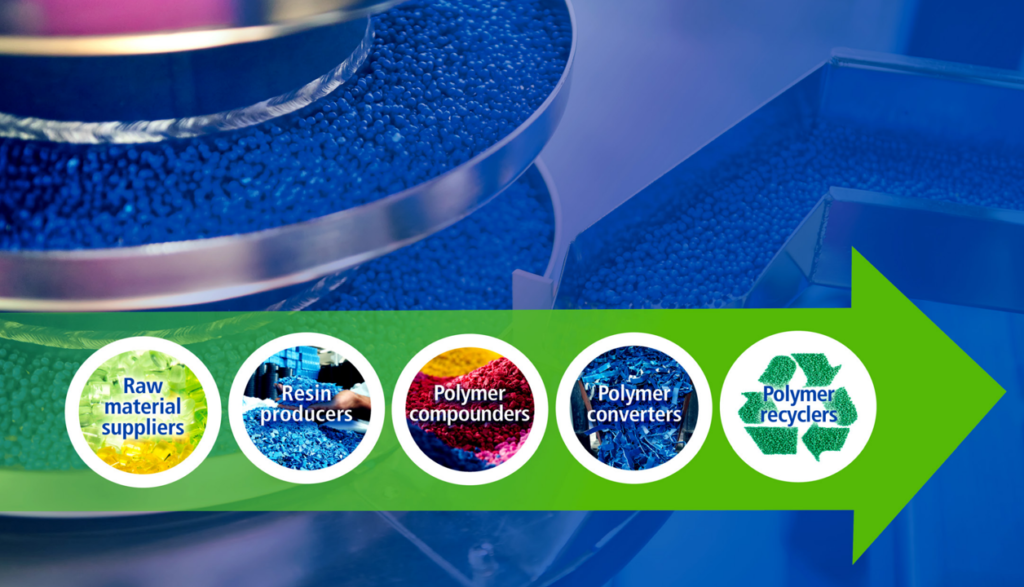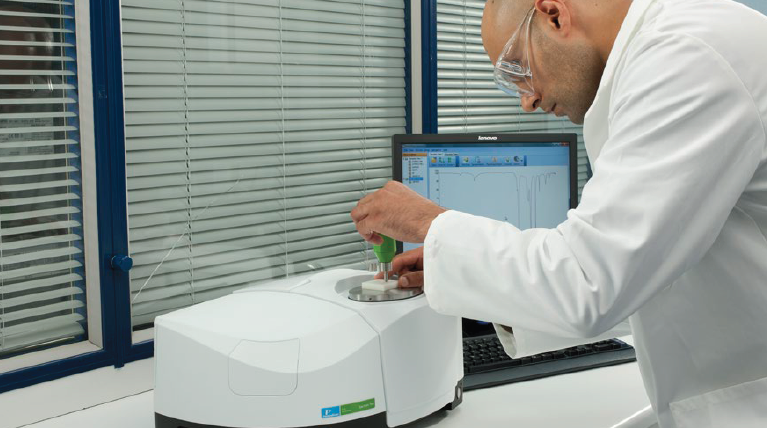
Polymers used in manufacturing are primarily synthetic organic compounds, such as thermoplastics
(e.g., polyethylene, polypropylene, polystyrene, polyvinylchloride, polyester, polyamide, polycarbonate,
polyethylene terephthalate), elastomers (e.g., rubber, silicone rubber, cross-linked polyurethanes,
neoprene, EVA), and duroplasts (e.g., polyurethane and various resins). Polymers are used in nearly
every industry and for purposes as diverse as construction, isolation and insulation materials,
medical devices and products, food packaging, consumer goods, and many more.
Every manufacturer that produces or uses polymers needs a comprehensive testing program to
ensure the quality of their materials and processes. Some manufacturers prefer to have an in-house
analytical workflow, others use contract labs to fill those needs, and many use a combination of the
two. Some parts of a company’s polymer testing program are driven by the processes they conduct,
products they produce, and regulatory and/or end-use requirements for their operations. There are,
however, many universal testing needs within the polymer industry.
Some of the drivers are:
• Research and development (R&D) efforts
• Manufacturing quality control (QC)
• End-use specifications
• End-product failure analysis
• Industry and regulatory standards
Industry-specific standards such as those for electronics, children’s toys, and automotive components
Governmental regulating bodies such as those for environmental protection, pharmaceuticals, and
food/beverages
General industry/manufacturing standards such as ASTM International and ISO
• Consumer and other end-user safety concerns
• Environmental safety concerns
The following sections discuss the testing needs at each step in the polymer production lifecycle, the
analytical technologies that will meet those needs, and important considerations to help you select the
instrumentation that will provide you with the actionable, reliable data you need. This deep dive is followed
by a review of universal considerations for technology evaluation.
POLYMER PRODUCTION LIFECYCLE
Raw material suppliers provide the chemical feedstocks—
e.g., monomers, additives, fillers—that form the basis for
polymer production.
Resin producers use combinations of raw materials to
manufacture different “master batches” of polymer resins.
Polymer compounders create different plastic formulations by
mixing and blending polymer resins, additives, and fillers into
process-ready pellets and flakes.
Polymer converters use plastic pellets and flakes to produce an
incredibly broad range of products—toys, electronics, automotive,
construction, packaging, and many others.
Polymer recyclers reclaim recyclable plastics and return them
to compounders and converters for reuse.

Environment
Testing Needs and Technology Selection
The primary categories of testing used in polymer production
are polymer identification and characterization, additives
identification and characterization, physical characterization,
residuals analysis, contamination analysis, safety analysis, and
evaluation for emissions and leachables.
Polymer Identification
The ability to accurately confirm the identity of a polymer is
important at several points in the polymer production lifecycle:
• Polymer converters must confirm the identity of incoming
materials before entering them into the final product
manufacturing process.
• Polymer recyclers must confirm the identity of polymer
recyclates before shipment to customers.
• R&D teams at compounding operations rely on accurate
polymer identification for the successful design of new
materials and processes, evaluating competitor products,
failure analysis, and so forth.
RESEARCH & DEVELOPMENT (R&D) – GENERAL
TECH CRITERIA
Considerations for R&D analyses throughout the
polymers industry include:
• Performance
• Scalability
• Ability to hyphenate
• Sensitivity and resolution
• Experience of supplier
These things combine to allow greater innovation and
uniqueness, which can give you and your company the
edge in your field.
Molecular spectroscopy techniques are used to identify polymers. They do so by measuring the absorption/transmission of light and other types of radiation, or the energy emitted from the interactions of excited particles in the material. The absorption or collision energy patterns of the material provide a chemical “fingerprint” that identifies that specific polymer. Digital polymer libraries have been developed that contain the
chemical fingerprints of individual polymers. Such libraries are used to identify known polymers and detect unknown formulations. R&D teams can create their own polymer library or update an existing library as they develop new polymer formulations. Your laboratory managers and scientists should confirm that the solutions you are considering have:
• The proven ability to generate high-quality data (sensitivity,
accuracy, reproducibility
• A comprehensive polymer library with search functions and
the ability to combine use with attenuated total reflectance
(ATR) should they require it.
• Software that is easy to use and that includes important
built-in features, such as cloud connectivity that will be
helpful if they need to link up to a master lab.

